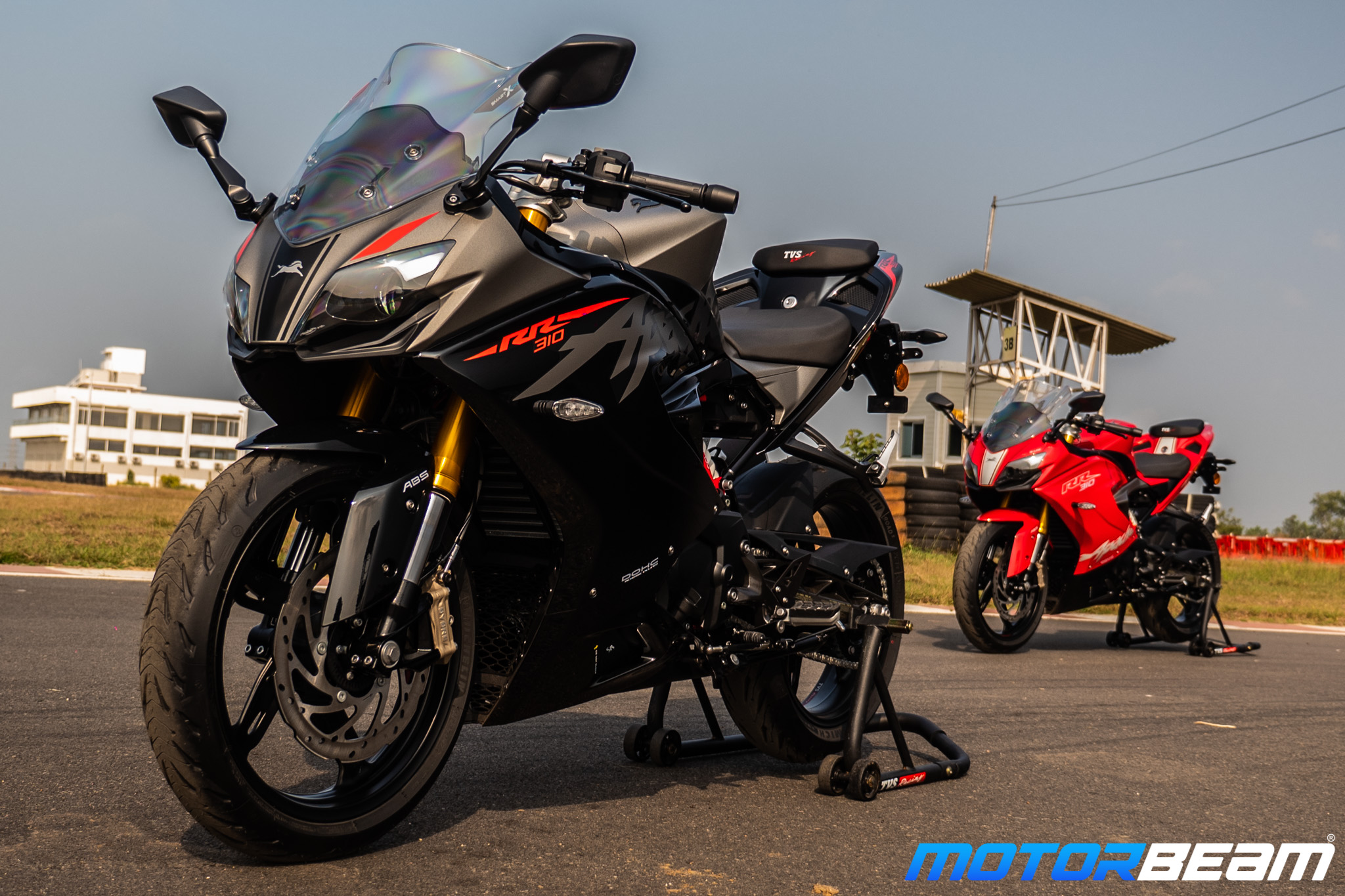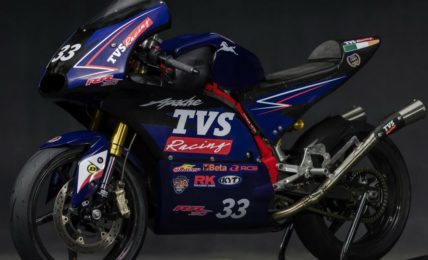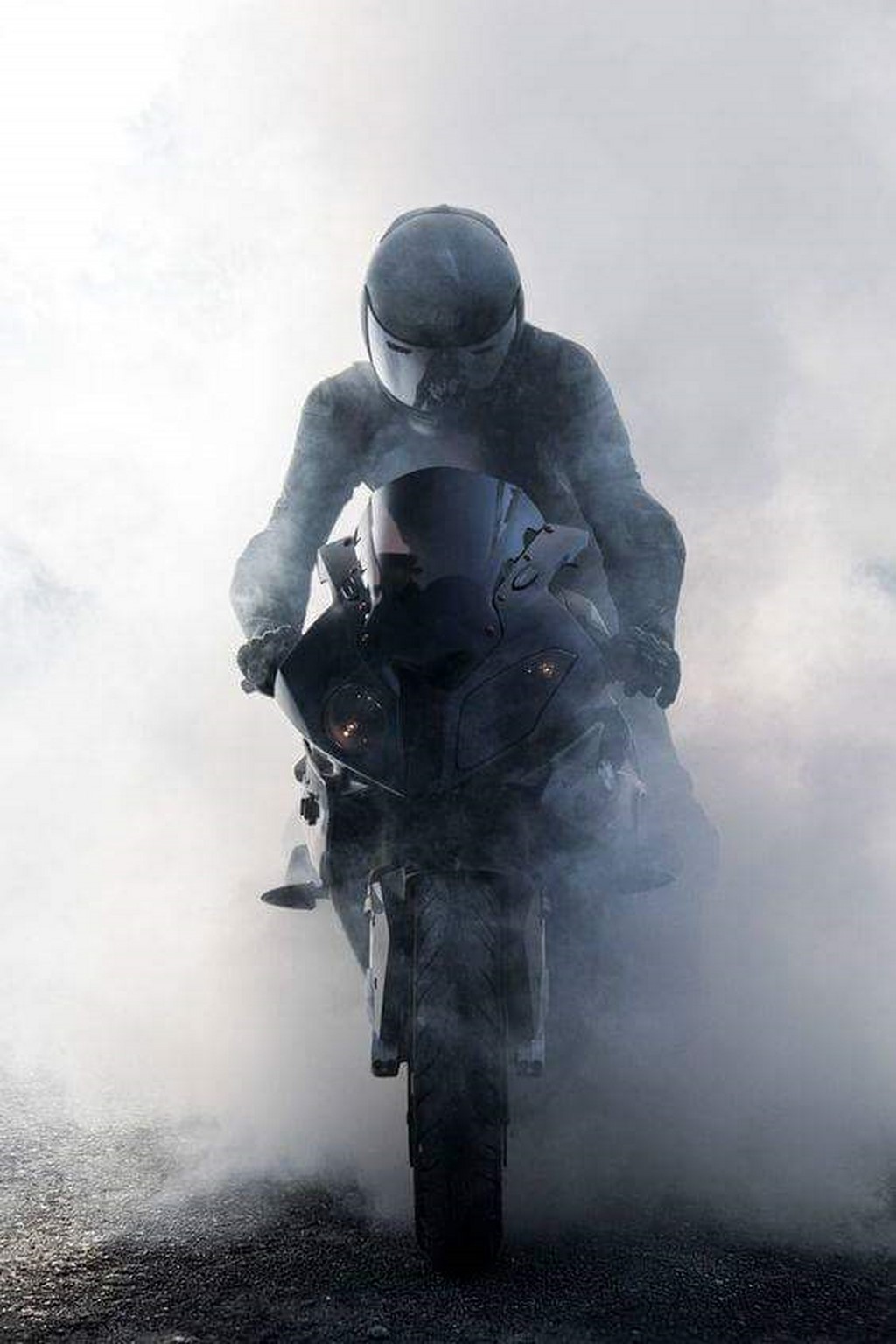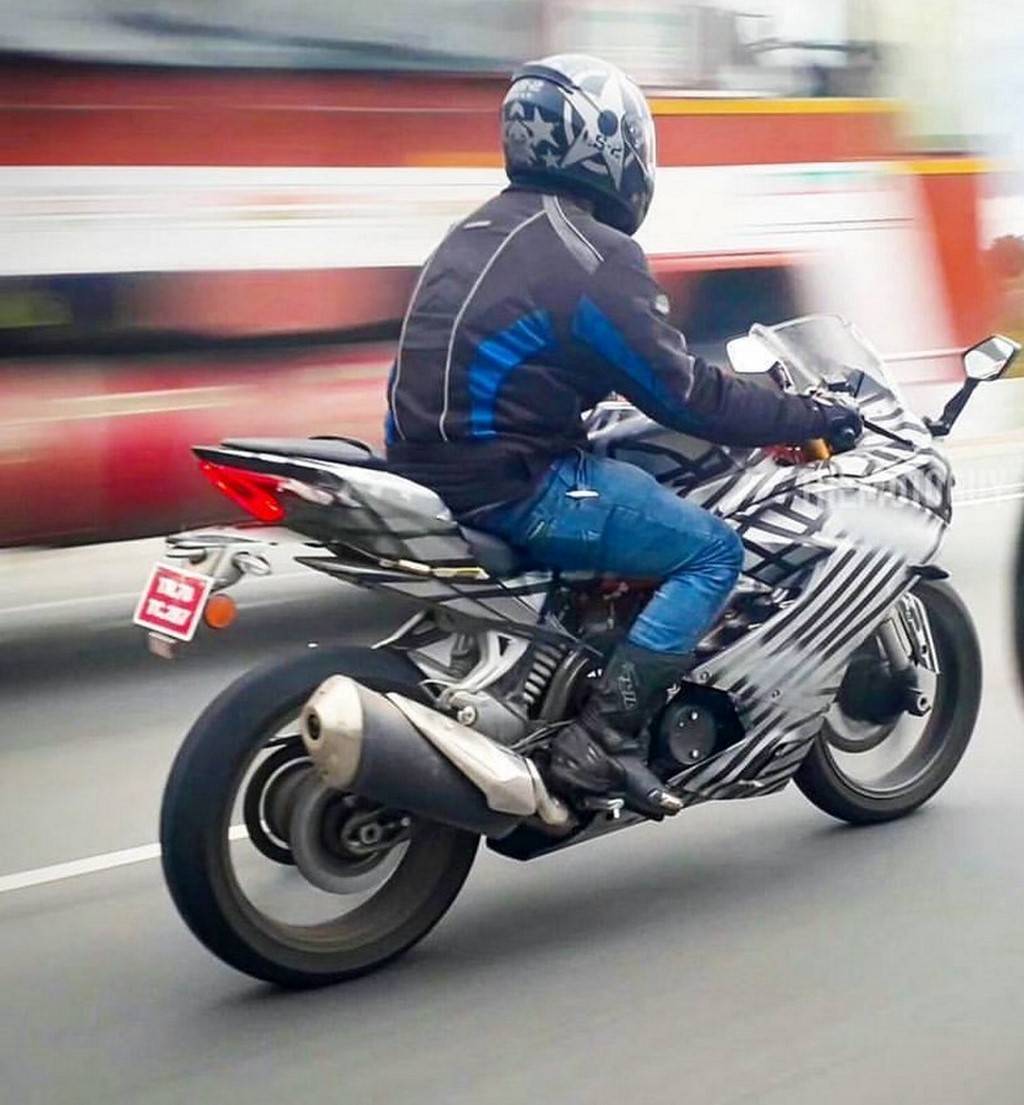
2020 TVS Apache RR 310 Review
Bike Tested: 2020 TVS Apache RR 310; Road Test No. 1187; Test Location: MMRT, Chennai
Price OTR Mumbai: Rs. 2,77,555/-
The TVS Apache RR 310 will always have the signature bright red colour option
The competition in the 300-500cc category of motorcycles is increasing at a very good pace. KTM has been leading with the 390 siblings but TVS wanted to have a piece of this pie too. They launched the Apache RR 310 back in 2017 while it got a minor slipper clutch update in 2019. However, as BS6 emission norms have kicked-in, TVS has updated almost all the bikes in the line-up and it has been a major change for the RR 310 as its update is not limited to BS6. We find out more by riding the track machine on the MMRT race track.
Motor Quest: The first TVS-BMW collaboration motorcycle Apache RR 310 was launched in December 2017. A slipper-clutch update with an introduction of a gloss black colour happened in mid-2019. The latest update for RR 310 is not just BS6, there are a lot more changes done to the motorcycle.
The new graphite black colour does look good on the Apache RR 310
Styling – Visually the TVS Apache RR 310 is just like its first iteration. If you see the red colour option, differentiating the BS6 bike with an older model isn’t easy. However, with a keen eye, you will be able to notice some extra rubber inserts near the visor. The visor itself is slightly bigger and has external screws, as it is not tucked under the front fairing. Tyres have a different tread pattern, while the switchgear and console look different. However, in the 2020 avatar, the RR 310 gets a new graphite black colour option. This is a dual-tone colour with a combination of matte-grey and gloss-black. Rest of the design elements have no changes at all except for a new set of graphics with a slightly larger Apache logo.
It is one of the most loaded digital clusters in its segment
Instrument Cluster and Switchgear – The Apache RR 310 had a fully digital console but this time around the cluster has been updated to an all-new vertical and colourful TFT LCD. It now displays a lot more information while it has a day and night mode too. Information like the speedometer, tachometer, gear position indicator, riding mode, clock, fuel and temperature gauge stays standard. A lot more data is displayed as the riding mode changes. One can even set what secondary information should be displayed in every mode like the odometer, trip meter and the rest. This console also gets Bluetooth SmartXonnect with which it connects to an app on the phone and delivers information like trip data, navigation and even race telemetry to the rider.
Right side – you throttle; left side – you play with the switches!
There are a total of 4 riding modes available – Urban, Rain, Sport and Track
One can even set the console for a dark mode view but it is set to automatic by default. The Track mode is the only mode where you can see the least amount of information while you can utilise the lap timer too. The right-side switchgear has an integrated kill-switch button to the starter while the left-side switchgear is like a gaming console. In the 2019 update, the hazard-switch was removed but it has come back in this update. The hi-low switch is also integrated into the pass-light switch while it works as a timing switch for the lap timer in the track mode. The switchgear looks very similar to the one seen on the KTM bikes but the plastic quality is far better. Most of the switches are finished in grey and they have haptic feedback too.




